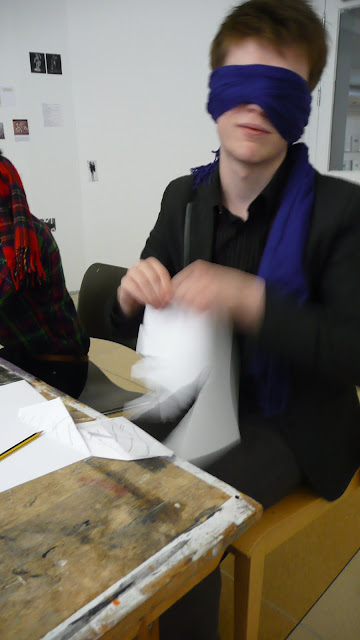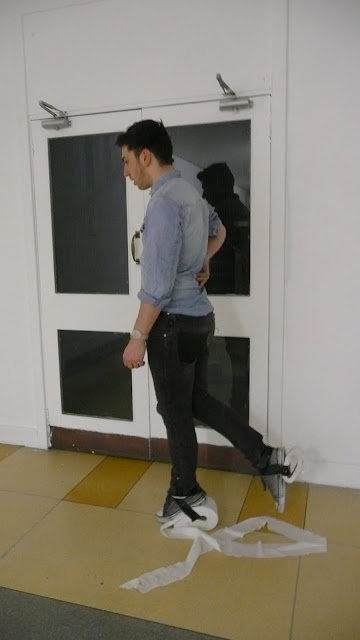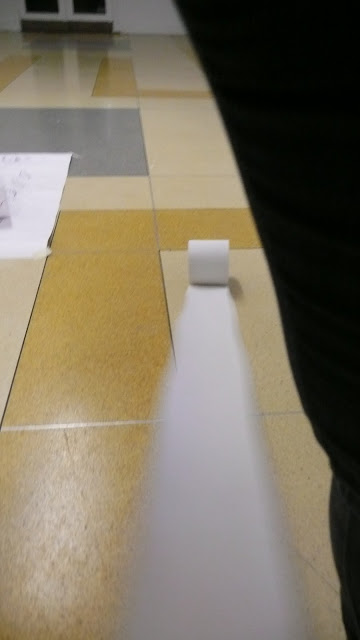This workshop came about through a 'call out' from the DJCAD Exhibitions Dept looking for people interested in being part of a new initiative called The Curatorial Team. We met throughout semester 1 and then some of us who had similar areas of interest broke away to begin brainstorming ways in which we would like to take our thoughts through process and curation. Through The Curatorial Team we were introduced to Matthew Jarron, the University's museum curator and the collection. We decided that although we shared the same passion for showcasing these medical, mathematical and scientific objects are thoughts on process differed so we thought it best to form into two different groups and submit a proposal of a two-part nature thus Collection(s) Part I and II were born.
Part I chose pieces from the Museum Collection, taking them out of their previous use/function context, and into an artistic context in order to highlight the aesthetic value of the objects, showing them alongside other artworks by DoJ students.The idea initially came from an interest in the University’s once functioning scientific instruments in combination with Heidegger’s theory of handiness which identifies the way people usually approach the world as subjects embedded in a world of objects and it is not until something breaks that the nature of being is brought forward.
Collection(s) Part I Images courtesy of Katie Reid





My team wanted to use more immediate means of process through physical contact with the objects so we opted to do a 2 group workshop open to various departments and years at DJCAD. We wanted to re-animate the objects in a contemporary context, we chose to use playful and often disorientating techniques as means to the artistic outcomes. Introducing the participants to unusual methods of practice in the hope that the tasks they were involved in would initiate new thoughts on the process of creation and act as future reference as alternative means for people to get together in the art college and collaboratively begin projects.

Our inspiration wall, inspired by a previous exhibition by Edwin Janssen and Tracy Mackenna in the Cooper Gallery in 2009 LIFE IS OVER! if you want it in which fragmented images and text create both interesting juxtapositions and inadvertent connections. We wanted this wall to instigate areas for discussion within the two groups of participants who came, me, Beth, Merle and Ross selected writings/images by theorists and artists who we had found had influenced our practice and we urged the participants to add to the wall over the course of the week. This meant the content of the wall was very diverse and acted as a visual representation of the different personalities involved in the workshop process. Examples of text/imagess up there; Janet Cardiff and George Bures Miller, Allan McCollum, Georges Perec's Species of Spaces and Other Pieces, Barthes' Mythologies etc.

The objects we selected;
Black sphere (DUNUC 3067)
Used in the Maths department in the early 20th century for teaching Spherical Trigonometry
Hitachi video camera (DUNUC 1)
Used in the University’s media services in the 1970s and 80s
Energy conversion machine (DUNUC 9076)
Used in the Physics dept – came from Siberia in Soviet Russia, c.1920s. Thermal electric convertor generates light and electricity from heat.
Technicolor 800 Projector (DUNUC ex-cat)
Used in the University’s media services as a portable film viewer, c.1960s-70s
Tuning fork with Resonator (DUNUC 10165)
Used in the Physics department c.1890s-1900s
Wave motion demonstration model (DUNUC 144)
Used in the Physics department, c.1950s-60s
Surgical Lamp (DUNUC ex-cat)
Used in the operating theatre at Sunnyside Hospital, Montrose, c.1960s-70s
Saliva ejector with clamp (DUNUC 3296)
Used in the Dental Hospital & School, c.1920s
Rotating mirror (DUNUC 214)
Used in the Physics dept to reflect sunlight for use in experiments before electric light, c.1890s
Flicker Photometer (DUNUC 198)
Used in optics experiments in the Physics dept, c.1900s
Tong Test ammeter (DUNUC 3769)
Used in the Physics dept to measure large electric currents, c.1950s
High voltage generator (DUNUC 286)
Used in Electrical Engineering and Physics, c.1950s-60s
Framed print showing Ivan Pavlov, presented to delegates at 15th International Physiology Congress in Leningrad, 1935 (DUNUC 3877)

Day 1: We chose to cover up the objects because we wanted to throw the participants in at the deep end, keeping the objects a surprise and using sensory means (blind folded, touch, sound, memory) of trying to understand the form, function and materiality of the pieces.















From memory participants were asked to draw the object they had just interacted with.








Participants remained blind folded as we played them a piece of sound work Dave Fyans a 3rd Year TBA student had created through interaction with the objects the previous week;
'The piece was constructed using redundant museum artifacts as source material, coaxing forgotten resonances and rhythmns from them and constructing them into a series of composed loops'

We asked of them to interpret the sound work in anyway they desired, most opted to draw but others such as Neil (above) instinctively chose a much more physical way i.e. the tearing of the paper.

The next phase involved restraint drawings using unorhtodox drawing implements - sticks, tripods, brooms, metal rods etc


These restraint methods in some ways give the participant a challenge as they try to successfully recreate the image of a chosen object on the paper, then on top of that imagine the insides of the object and reproduce it, then we asked of them to draw its imagined function. These drawings become incredibly abstract and loose but dependent on the chosen implement the amount of control can vary. These restraint tactics ironically create loose marking gestures.













Participants were urged to use their implement in any way they liked and because of the challenging nature it automatically makes people use different parts of their body and think of ways of manoeuvring oneself against the implement to create the desired effect on paper.







One of my favourite restraint drawings, created through attaching the stick to the Tuning Fork and through the movement created by spinning a masking tape wheel the marks were made on the paper.





The next stage was to give the participants time to contemplate an object they found interesting and visually represent it.























In the afternoon we split into two groups to discuss and examine questions we felt topical to the process and outcomes;
Do ordinary objects have important uses/functions?
Art some uses/functions more important than others?
Does art have uses/functions?
What makes a urinal, or a steel bucket art?
Is it difficult to define what objects are art, and what objects are not art?
Content over form or form over content?

I found the most interesting topic raised to do with institutionalisation and art making and the need for documentation in institutes of creation for them to be valued. For example in the case of performance art this is difficult territory because often it is an intuitive, immediate, experienced form of art and should it always need documentation...


The next part involved asking the participants to come up with creation verbs. By this point in the afternoon though everyone seemed to be losing the plot a bit and they were definitely thinking outside of the box...


Day 2: At random the participants picked a verb to then use on the household object we asked them to bring with them.






These actions were then turned into performance with the household object. Everyone became well and truly initiated into the world of performance art.

Documentation of the process was really important for our overall ethos as the Collection(s) team, showing that these disused museum pieces can again have a purpose both as an object of interest to the public in their original state as well as in the context of thinking about working methods and contemporary art.










The final stage of our workshop was to give the participants time to create a piece of work inspired by the alternative process they had just gone through, encouraged to use found and sourced materials, to include or to respond to the museum object and the space of the Lower Foyer Gallery.






Artists involved; Dave Fyans, Becca Clark, Lada Wilson, Anne Rachel Ward, Neil Anderson, Ross Fleming, Merle Smeets, Beth Savage and me.

No comments:
Post a Comment